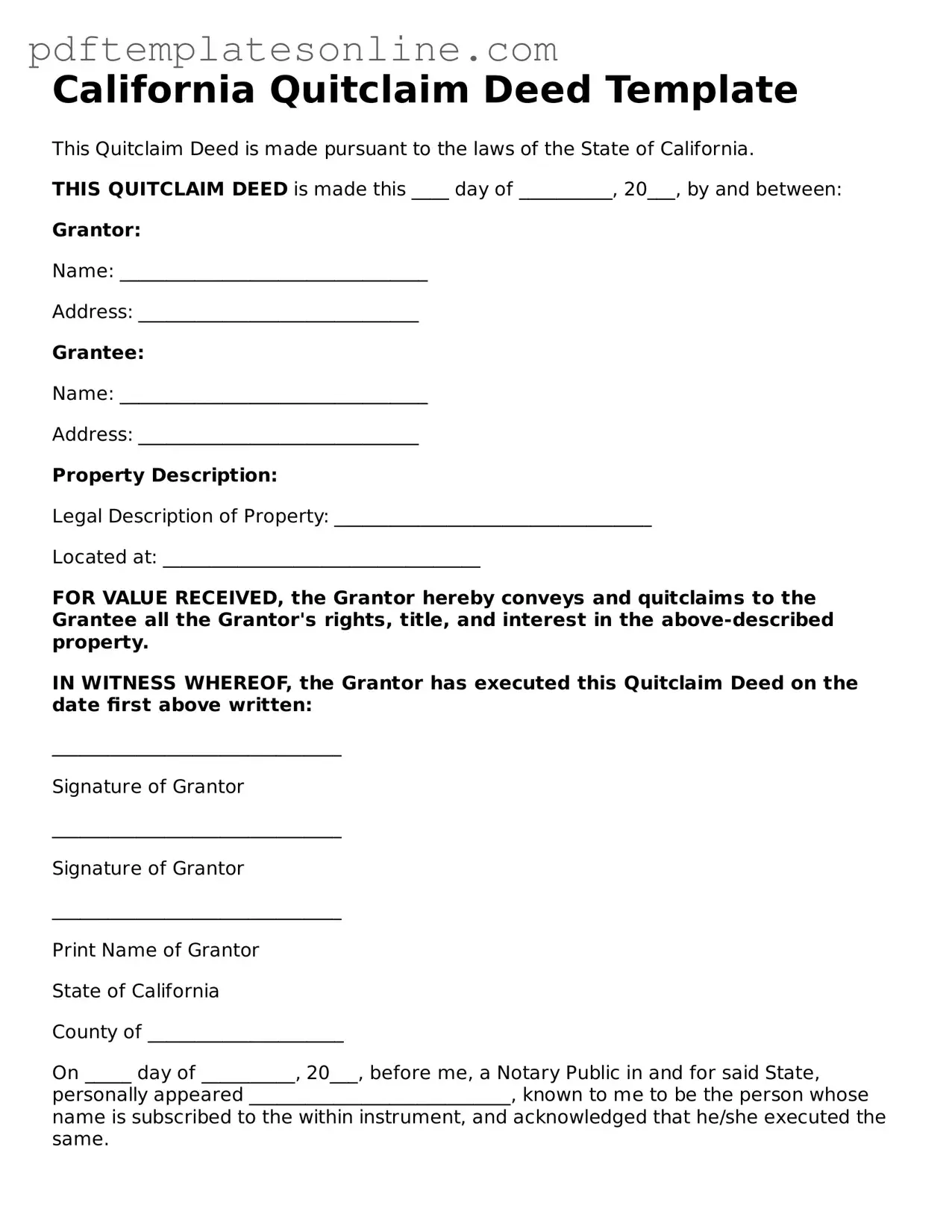Filling out a California Quitclaim Deed form can seem straightforward, but many individuals make common mistakes that can complicate the process. One frequent error involves incorrect names. It is essential to ensure that the names of both the grantor (the person transferring the property) and the grantee (the person receiving the property) are spelled correctly and match the names on their respective identification documents. A simple typo can lead to significant issues later on.
Another mistake often encountered is neglecting to include a legal description of the property. This description should be precise and detailed, including the parcel number and any relevant boundaries. Without this information, the deed may not be valid, and the transfer of property rights could be questioned.
People sometimes forget to sign the deed. A Quitclaim Deed must be signed by the grantor to be legally effective. If the grantor fails to sign, the deed holds no value, and the transfer of property does not occur. Additionally, the signature must be notarized. Failing to have the deed notarized can lead to challenges in the future, particularly if the document needs to be presented in court.
Many individuals also overlook the importance of recording the Quitclaim Deed with the county recorder's office. While the deed becomes effective upon signing, recording it provides public notice of the transfer and protects the grantee's rights. Without this step, future claims on the property may arise, leading to potential disputes.
Another common error is not understanding the implications of a Quitclaim Deed. This type of deed transfers whatever interest the grantor has in the property without guaranteeing that the title is clear. Many people mistakenly believe they are receiving a warranty deed, which provides more protection. It is crucial to understand the nature of the deed being used to avoid unexpected consequences.
In some cases, individuals fail to check for existing liens or encumbrances on the property before completing the deed. If there are outstanding debts or claims against the property, the grantee may inherit these issues. Conducting a title search can help identify any potential problems that need to be addressed before the transfer.
Another mistake involves not providing adequate consideration. While a Quitclaim Deed can be used for transfers without monetary exchange, it is still advisable to state some form of consideration, even if it is a nominal amount. This practice can help clarify the intent of the transfer and may prevent future legal complications.
People sometimes misinterpret the relationship between the grantor and grantee. If the parties involved have a familial or business relationship, it may be beneficial to include this information in the deed. This context can help clarify the nature of the transaction and may be relevant in the event of future disputes.
Lastly, failing to consult with a professional can lead to a host of problems. While it is possible to fill out a Quitclaim Deed independently, seeking guidance from a real estate attorney or a qualified legal document preparer can help avoid mistakes. Professional assistance can provide clarity and ensure that all necessary steps are taken to complete the transfer smoothly.
